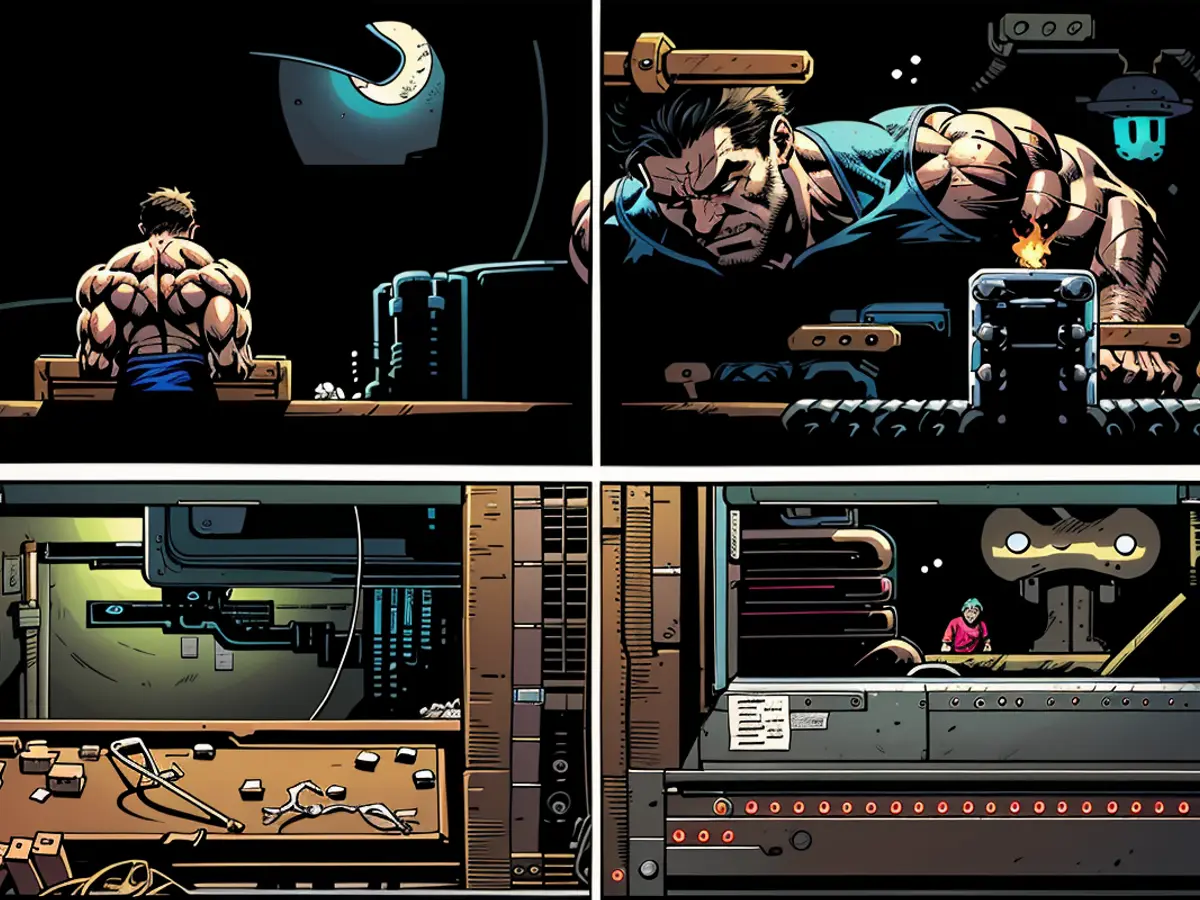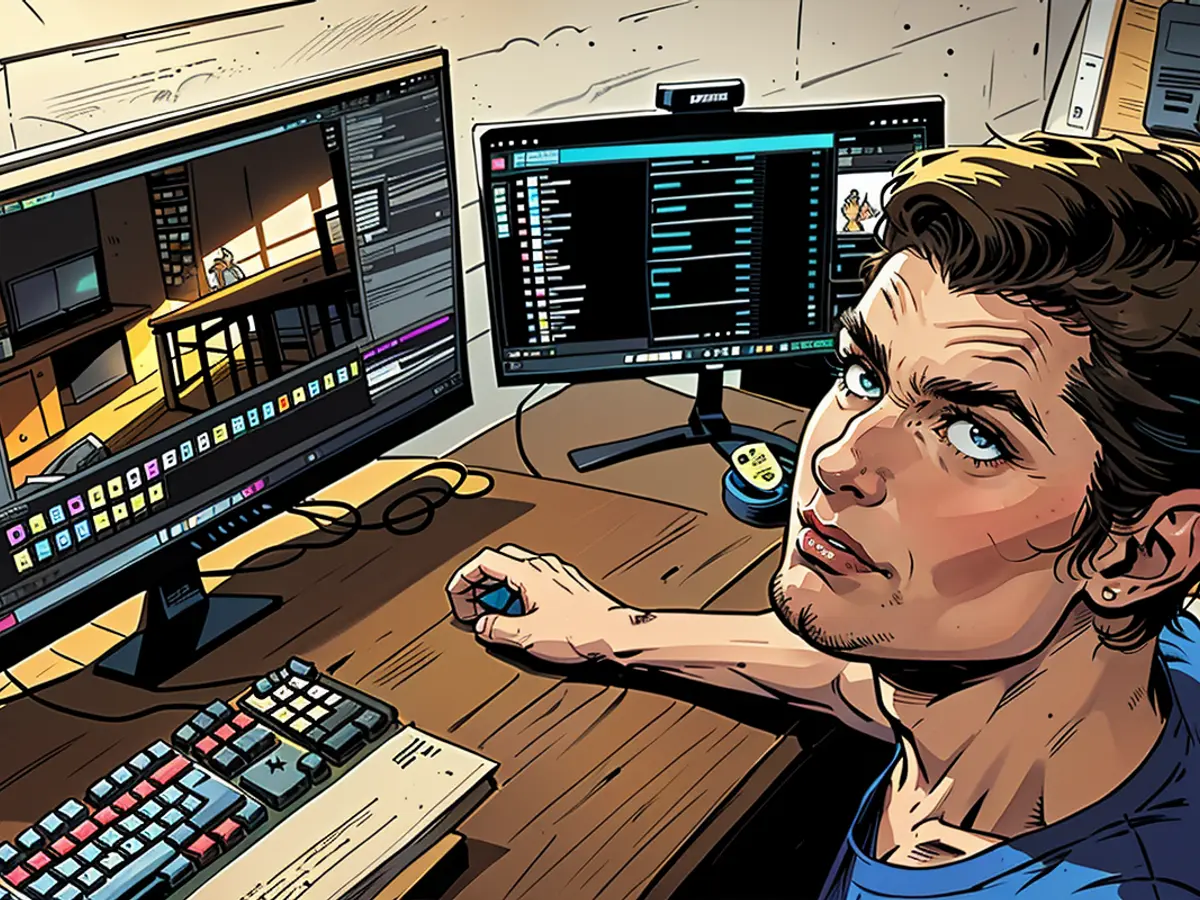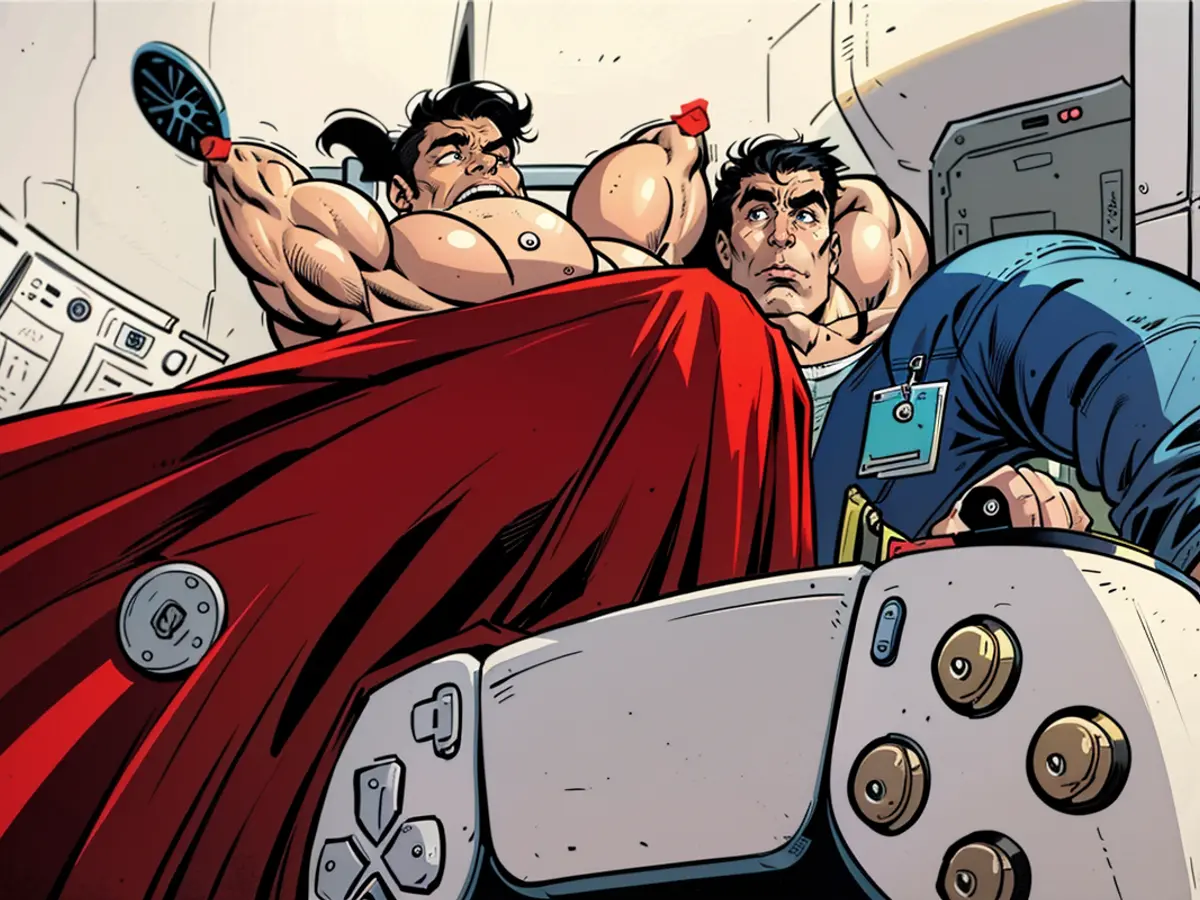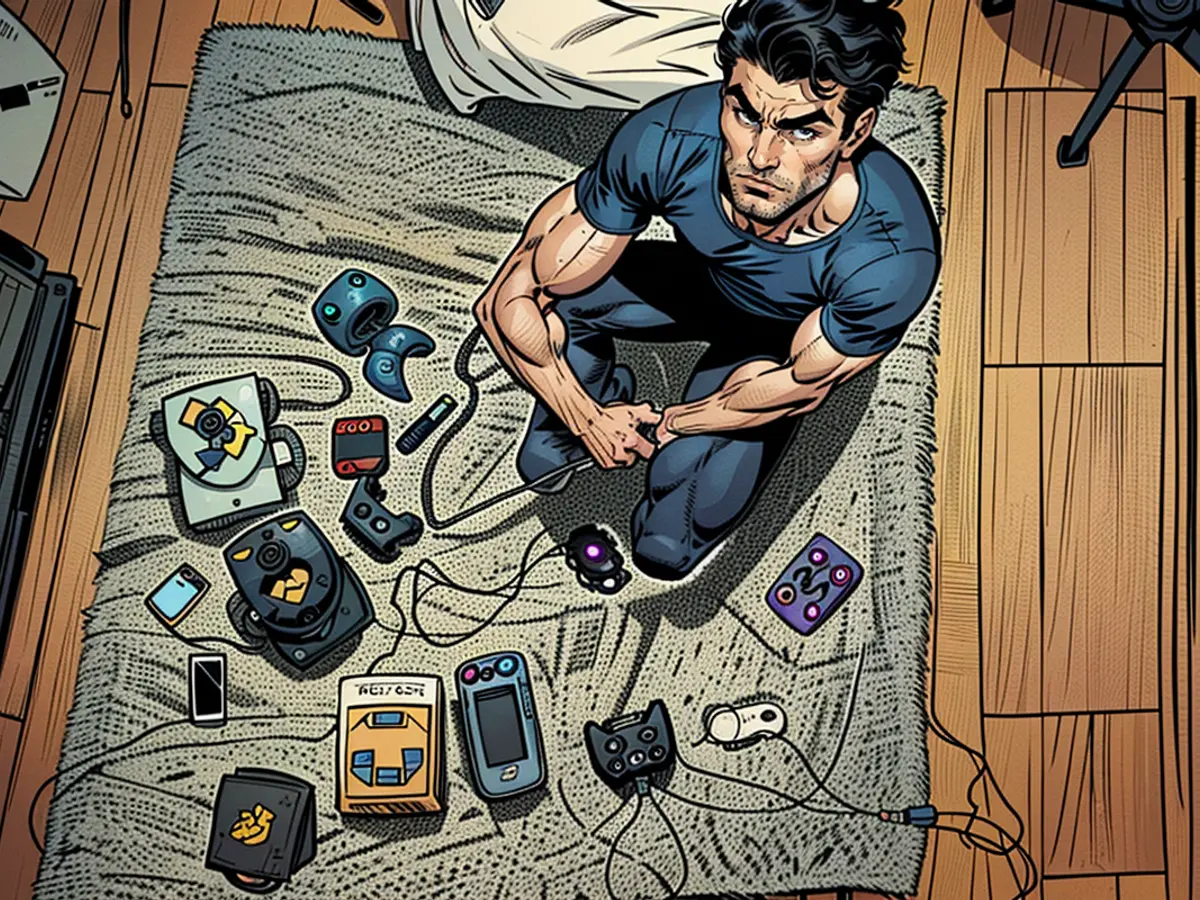- Skilled Game Creator Encountering Variable Professional Outlook
The educators were taken aback when introduced to the small digital game "Icentio". As a small spark, the player journeys into a mysterious underworld; its faint glow only illuminates the immediate surroundings and shields them from darkness. Sufficiently dim to recognize hazards and fearsome creatures on time. The spark can grow brighter, but only for as long as its supply of luminescent material endures. Rare glowing mushrooms offer replenishment. With an immersive soundtrack, it delves deeper and deeper. Everything fits in this compact game: the music, simplified graphics, incremental difficulty, and believability of the story. What surprised the educators the most: it's the work of a first-year student with no prior experience in game development or artistic training.
For his natural abilities, 23-year-old Julian Carter doesn't consider himself. "The first months at the academy were overwhelming. There was so much to absorb. I thought I wouldn't make it," the lanky blonde recalls the initial days at the "htk Academy". Now in his second semester, supposedly the toughest, the HTK is a state-approved vocational school in Hamburg that provides game development as a full-time training program, along with communication design and illustration. In addition, approximately 23 game design bachelor's and master's programs are offered at universities of applied sciences, universities, distance universities, and private academies in Germany.
Game development demands creativity in all forms
"Developing games encompasses almost every form of digital creativity: from writing the story to music and sound effects, art design, animation, game mechanics to programming," Julian enthusiastically shares. We are seated in his room. The walls are adorned with shelves filled with video games, meticulously categorized by console type: here Xbox games, there PlayStation, and a small shelf for the Nintendo GameCube. His fascination with games started with the GameCube - his first personal console as a child. It remains a cherished keepsake today, a fitting shrine in his room, readily playable. The spacious room echoes stereotypical gamer characteristics: natural light seeps in through two narrow basement windows. Underneath, a desk with two monitors and a gaming PC with illuminated fans serves as the battleground. Posters of games illuminate the walls, brought to life by an LED light strip. The OLED TV with a cozy couch in front of it becomes the focal point of the room. "Playing on the console has always been a social event with friends for me," he confesses. Friends would schedule appointments, watching each other play, or cooperating with two controllers. A quintessential multiplayer experience.
He began to ponder early on the intricacies of game structure and the allure that holds players captive. Technological advancements are only a piece of the puzzle; the narrative is equally essential. Those familiar with the pixelated games from the 90s know: if the narrative is captivating, the graphics are visualized in the player's mind.
Tough entrance examination
For him, pursuing game design was made possible through his mother's relocation from a small town near Wiesbaden to Hamburg. Despite the HTK art school requiring a tuition fee for enrollment, one cannot join without successfully passing an entrance test. "We had to design a game character and sketch it in three distinct poses, transform the simple game 'Flappy Birds' into a new game, and create a replica of the famed 'Candy Crush'," Julian recalls.
Art may captivate him, but he is not particularly skilled in drawing or illustration, says Carter. He is enthralled by crafting stories and, in particular, constructing environments – the game levels where the player will later traverse. Later in his career, he would build the virtual world of the game as a level designer, using the graphics of the art designer and the sound effects and music of the sound designer, with visual effects completing the final touches.
"How Game Developer Jam-Sessions Work"
This division of roles is already practiced in studies. At regular intervals, study groups are formed and tasked with developing a game within a week – from the initial concept to the graphics and sound to the playable version. This can only happen with specializations, explains Carter.
Everyone has their niche skill, and collaboration is crucial. In the first two hours, a primary game concept must be established: What is it about? What is the game's objective? How will it be presented, and what is feasible within such a time frame? Limiting oneself is a critical ability. Then, duties are assigned. "Those are always intense weeks, and there's scarcely any time left for bug fixing – fixing errors – afterward," says Julian Carter. After all, it would be embarrassing if the game malfunctions during the presentation of the work.
"Gaming is male? That was once!"
The widespread belief that these "jams" are primarily frequented by pale-skinned male nerds is misleading. Half of them are women, and none are pale. There is a diverse range of people, truly anything one might expect, raves the 22-year-old. Both women and men have their strengths and weaknesses. Women might excel at storytelling and drawing, while men might be better at programming. But these boundaries are fluid, says Carter. What they share in common is their passion for video games. Study game design without enthusiasm for video games, and success would be an elusive dream.
The gender balance is also evident in the player base. According to surveys by the industry association "GAME", 48 percent of gamers in Germany are women. This is a significant segment, as about half of all Germans play regularly, regardless of console, gaming PC, or smartphone. The increasingly popular mobile games on smartphones have become new revenue streams for developer companies.

The Thing About Candy Crush
Affordable development costs pair up with a massive target audience and an optimal distribution platform in hardware manufacturers' stores like the Google Play Store. A notable example is Candy Crush: This simple game involves clearing virtual sweets in a specific order. Initially, the small app was a free web browser game twelve years ago, then gained popularity on Facebook, and eventually became a hit as an Android and iOS app in respective app stores. It has now been downloaded over 5 billion times, with about 200 million users playing the game monthly. Large-scale game developers can only fantasize about such figures. Although Candy Crush is free, users can purchase in-app advantages. Given the large number of players, these small in-app purchases generate enormous revenues. With approximately 20 billion USD in revenue, Candy Crush is likely one of the most financially successful video games at present.
The Fantastic Secret of Candy Crush? It's easy to learn, difficult to master, and rewards the player at just the right moment - it's a dopamine-inducing machine. "Gamification" is also a topic in the lectures Valentino attends. How do I guide the player while offering them freedom? When should I reward them, and with what? How should I increase the difficulty level without frustrating them? And how do I reel the player back into the game? This is a delicate balancing act, an art.
The Conclusion of a Semester Requires a Game
At the end of every semester, students must demonstrate their learned knowledge by developing a game. This is often a challenging period, as all aspects must be mastered. However, for his first game "Icentio", Valentino found it surprisingly easy. "I have a soft spot for simple jump-and-run side scrollers. The darkness of the game world, complimented by appropriate music, creates an appealing atmosphere," he enthused. The professors were amazed. Valentino's game not only received the highest grade but also received many positive comments from users. Most semester projects are made available for download on an online platform and feedback is requested – a taste of things to come in future jobs.
However, job prospects in the German gaming industry have "worsened" over the past two years, according to the industry barometer of the association GAME. While in 2022, about half of the companies expected a positive development, today only 12 percent do; half even foresee a bleak future for the industry. Yet the market conditions should be promising. Germany is the fifth-largest video game market globally.
In-game purchases sustain the gaming industry
In 2023, Germans spent almost 6 billion euros on games. However, only 1.1 billion euros went towards new titles. The primary source of revenue is in-game and in-app purchases – the Candy Crush effect. A few euros for a new character in a free game may not seem like much in the household budget, but it can quickly add up. Some banks, like Sparkasse, now offer tools to monitor in-game purchase expenses.
Economically, game studios feel neglected by politics. Compared internationally, Germany's support for digital games is only average, trailing behind the USA, UK, France, and Canada. This impacts the number of potential employers for newly trained game designers. Germany has about 880 gaming companies with a total of 11,800 employees. France has 1,200 developer studios with 32,000 employees. Canada, with less than half the population of Germany, has 932 companies in the gaming sector with 32,000 employees. The UK employs around 74,000 people in 220 studios.
Desired Profession: Indie Game Developer
For now, Valentino is not too concerned about these matters. He is only in his second year of a six or seven-semester program. He hopes the university will assist with job placement. Hamburg, alongside Berlin and Frankfurt, has the most game studios. And if all else fails, perhaps he will join a small group developing "indie games".
Indie refers to "Independent", signifying individuals or small groups of game designers who work independently of a publisher. The indie scene has gained considerable significance in recent years due to its creation of highly innovative games at a lower cost. Unlike large game publishers like Ubisoft, Electronic Arts, or Activision, which cannot afford to take too many risks with their multi-million-dollar investments in a new game, indie studio creatives have much more freedom to experiment. Players love it, and many successful indie games have later been acquired by publishers. The most famous indie game is Minecraft.
Valentino secretly dreams of this, but it's still two years away. For now, he needs to complete his second game – a 3D game in third-person perspective. The story is inspired by a horror short story he read once, about a girl who tries to play hide and seek in a big house, only to find no friends to play with. She accidentally discovers a dark magic spell that turns demons into cuddly toys. Her playmates are rather peculiar. For his second game, he received a 1. The minus was for a bug where the cuddly demon teddy bear became stuck in a flower pot.

Julian mentions having a fascination with games that started with the GameCube, his first personal console as a child. Now, his room is filled with video games categorized by console type, including a section for PlayStation games.
In the game development process, various roles are essential, such as writing the story, music and sound effects, art design, animation, game mechanics, and programming. Julian, as a level designer, works with the graphics created by the art designer, the sound effects and music created by the sound designer, and the visual effects. He explains how every student at the HTK Academy has a niche skill, and collaboration is crucial for developing a game within a week.









